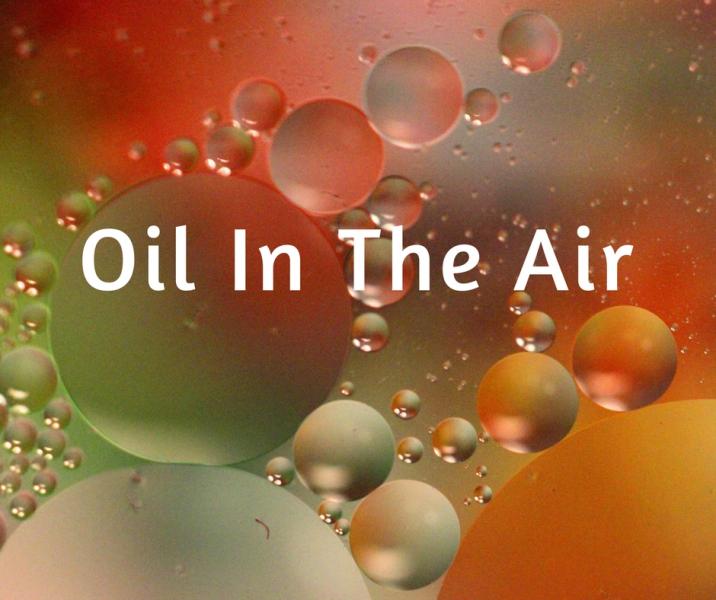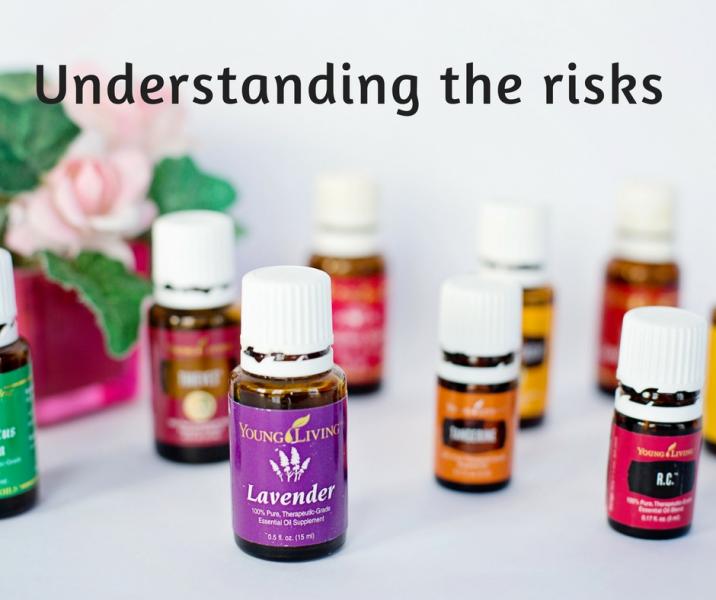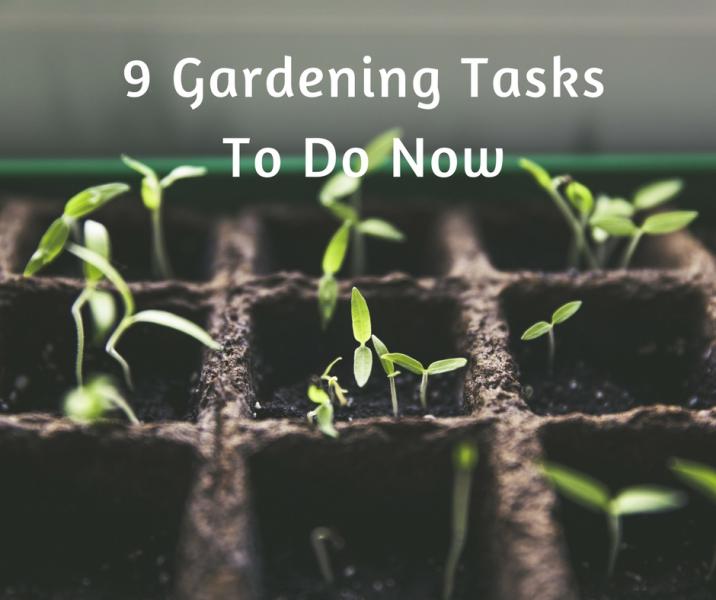MARCH 2018 Newsletter
Submitted by RonHanson on Wed, 03/14/2018 - 09:20


It’s time for the March Sterling Home Services newsletter! This month we bring you a special in depth look at using essential oils in your home. As a busy and experienced home inspection service we encounter a variety of interesting and sometimes alarming situations. With the growing popularity of essential oils and oil diffusers this month’s issue describes, first hand, what can happen with overuse of these products. Plus we’ll look at what you can be doing now to prepare your garden for summer’s bounty. Read on!
This month we bring you a special in depth look at using essential oils in your home. As a busy and experienced home inspection service we encounter a variety of interesting and sometimes alarming situations. With the growing popularity of essential oils and oil diffusers this month’s issue describes, first hand, what can happen with overuse of these products. Plus we’ll look at what you can be doing now to prepare your garden for summer’s bounty. Read on!
 This month we bring you a special in depth look at using essential oils in your home. As a busy and experienced home inspection service we encounter a variety of interesting and sometimes alarming situations. With the growing popularity of essential oils and oil diffusers this month’s issue describes, first hand, what can happen with overuse of these products. Plus we’ll look at what you can be doing now to prepare your garden for summer’s bounty. Read on!
This month we bring you a special in depth look at using essential oils in your home. As a busy and experienced home inspection service we encounter a variety of interesting and sometimes alarming situations. With the growing popularity of essential oils and oil diffusers this month’s issue describes, first hand, what can happen with overuse of these products. Plus we’ll look at what you can be doing now to prepare your garden for summer’s bounty. Read on!Essential Oils

As we inspect home across the area we sometimes encounter interesting or alarming situations. In the past month one home inspection in particular revealed an unexpected and potentially toxic situation with essential oil diffusers. Here is Ron’s startling story.
During a recent inspection of a fairly new, well kept home, I noticed ghost staining on areas of the ceiling and walls. For those of you that are not familiar with ghost staining, it’s caused by any combination of moisture, cold spots, static electricity, air currents, and a supply dust, soot and/or other particulates that settle on cold spots on ceilings and walls, such as studs, joists, drywall fasteners, and areas that are poorly insulated.
As the inspection progressed I noticed an oily film on all the window glass, as well as black streaks on the vinyl window frames. It was also peculiar and alarming that not one smoke alarm was working. I tried activating the hardwired/battery back-up smoke alarms with canned smoke AND the test button. Not a single one worked! Inspecting the furnace, I removed the dirty, oily filter and noticed an oily film on the cold air returns, too.
Although I noticed a large wooden box of essential oils on the kitchen counter when I arrived, it took me a while to put two and two together. Every single room had a diffuser spouting a variety of succulent scents throughout the home.
I can’t help but wonder what these beautiful smelling oils that leave black marks on the ceilings and walls, and leave an oily film on window glass is doing to the lungs and bodies of the residents that breath them.
Think about it. When you’re making your favorite soup or chili in the winter and the comforting smells fill your home with the mouth watering aroma of Grandma’s chicken noodle soup, those smells are carried by moisture, moisture that often appears on your windows in the form of condensation. The same is true for a diffuser that needs to be filled occasionally or a plug in air freshener that has to be replaced once a month. Where did the oil go? It went into the indoor air, air that we try to keep clean and healthy for our families.
When I perform indoor air quality testing, I’m always surprised at what shows up in my spore traps. Along with dust, I often find significant quantities of grease and oil. Some homes I perform tests in, I can justify the dirty air, other homes appear to be relatively clean. You can bet from here on out, I will take notice of air diffusers and/or plug in air fresheners when I perform air quality testing.

In addition to the general properties of oil and putting too much oil in the air of your home, these essential oils have specific chemical properties. That’s the benefit of using essential oils. They can help ease headaches without medicine, calm an anxious mind, even clear up acne or a case of athlete’s foot. They can also be harmful or have dangerous consequences when used improperly. Before you jump on the essential oil/aromatherapy hobby horse, educate yourself on the positive AND NEGATIVE properties.
Harmful to pets
Certain oils are not safe around pets, and some pets may be more sensitive to essential oil fumes than others. Avoid use of essential oils with cats, fish, birds, and rodents (such as rabbits, hamsters, guinea pigs, and gerbils). Cats are known to have a sensitive metabolic system. Feline liver and kidneys do not breakdown certain substances because of the lack of enzymes. Any use should be avoided in these animals including inhalation, diffusion, and topical treatments. Tea Tree oil or Melaleuca alternifolia oil is toxic to most animals.
Harmful to people
Certain oils can cause adverse reactions in people. Like this woman >> (click for story) who posted her experience on social media. She was diffusing patchouli plus other oils in a diffuser. Her face was accidentally misted when she turned the diffuser off. The misted oils on her face then reacted to the heat of the fire in her fireplace causing a chemical reaction. She experienced severe chemical burns on her face. Patchouli is known for causing “phototoxic reactions” that include redness, stinging, peeling, and blistering.
Several essential oils will produce immediate irritation on the skin, others irritate mucous membranes, or are photosensitive and will react to heat or light. There are essential oils which should be avoided during pregnancy and during breast feeding, as well. (See resource links at the bottom of this article to help you start your research.)
A study in Taiwan by the Chia-Nan University of Pharmacy and Science took a look at aromatherapy and considered some of the negative effects:
“The scientists concluded: ‘As aromatherapy, used by the general public and some health institutes, has become one of the most popular complementary therapies, its impact on indoor air quality and health effects cannot be neglected.
‘Volatile organic compound degradation caused by the reaction of these compounds with ozone present in the air can produce small, ultrafine by-products called secondary organic aerosols which may cause eye and airway irritation.’
They added: ‘We compared secondary organic aerosol levels associated for the various fragrant and herbal essential oils tested and conclude that the layout and ventilation within a particular spa may affect the level of indoor air pollutants produced during massage with aromatherapy.’
In 2007, another group of scientists also from Taiwan showed that burning tea tree, lavender and eucalyptus oils in the office also produced large numbers of these harmful particles.
Aromatherapy oils have also been found to worsen breathing problems in those with lung disease and to increase symptoms of asthma.”
Aromatherapy, essential oils, diffusers are not bad things, they can be beneficial in many ways. Just be sure to educate your self, read the use and care guides, and follow all safety precautions.
Further reading
Risks and Dangers of Essential Oils https://wellnessmama.com/26519/essential-oils-risks/ - this is a well researched and well-documented article on the use of essential oils including links to studies and sources.
Exploring Aromatherapy - Safety Information from the National Association for Holistic Aromatherapy https://naha.org/explore-aromatherapy/safety
Can Aroma Therapy Oils Poison You? http://www.dailymail.co.uk/femail/article-2051976/How-aromatherapy-oils-... " target="_blank"> http://www.dailymail.co.uk/femail/article-2051976/How-aromatherapy-oils-poison-Tiny-particles-oils-damage-liver-kidneys.html#ixzz59jpI3Tfk
9 Steps You Can Take - Pre-Spring Gardening
Bountiful vegetable gardens begin when there’s still snow on the ground. This early steps are the foundation that ensure a successful growing and sowing season! Plan on Gardeners!

1. Design the garden. There are many online resources to help you plan your garden, what to plant, when to plant, where to plant. Start by making a list of what you want to grow this year.
2. Inventory your gardening supplies. Check your seed supply. Seeds from last year will be good this year and may have plenty left over. Make a list of what you still need then consider attending a seed swap to trade your extras for what you need.
3. Top work. Even before the soil is tillable you can work outside in the garden. Now is the perfect time to lay fresh gravel or wood chips to paths and aisles, especially before the weed seeds start flying through the air!
4. Shopping list of supplies. In addition to seeds you might still need fertilizer, compost, stakes, rope, edging. Make a list so it’s ready when the gardening sales and specials begin at your favorite gardening supply stores.
5. Add compost. Or any organic matter, because you can never have too much. Organic matter feeds and enriches the soil which will yield healthier more bountiful plants. You don’t have to work your compost into the soil if it’s still frozen, but eventually you should add a mulch layer to prevent weeding and disease.
6. Monitor soil readiness. Your garden soil needs to be dug, aerated, and loosened before planting. Digging the soil when it’s too wet can damage the soil structure making it not conducive to root growth. When the soil has a moist but cakey consistency it’s ready to be dug. It should clump up when you squeeze a handful of it, then crumble easily apart.
7. Aerate the soil. Don’t turn it - turning the soil can bring up buried weed seeds that will germinate and give you a garden full of weeds. Instead, use an aerating tool to poke through and loosen the soil.
8. Weed. Save this for after aerating as the soil will be loosened and the weeds will come up easily. It’s important to get a jump on weeds before they go to seed to keep them under control!
9. Add stakes. Before planting and after the soil is thawed and workable, use your plan (see step 1) and stake out the garden. Put up the tomato cages, bean and pea trellises, and line stakes. Staking out the garden gives you an opportunity to adjust your plan as necessary and adjust your shopping list as necessary.
Now you’re ready for seeds and plants!


